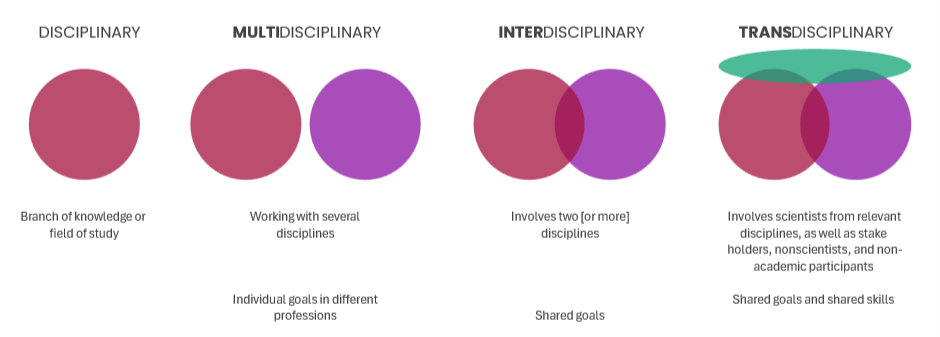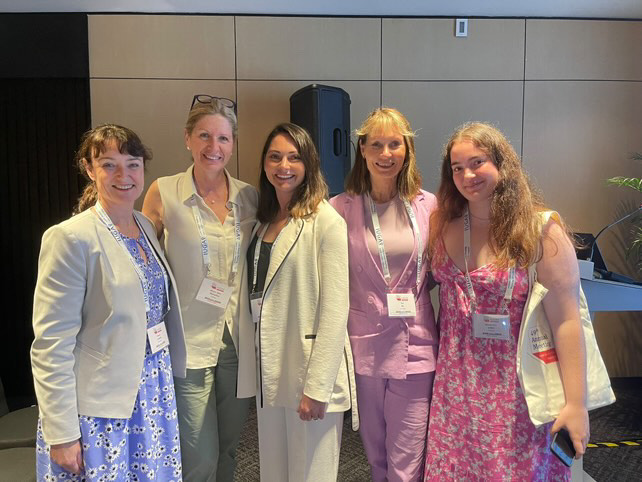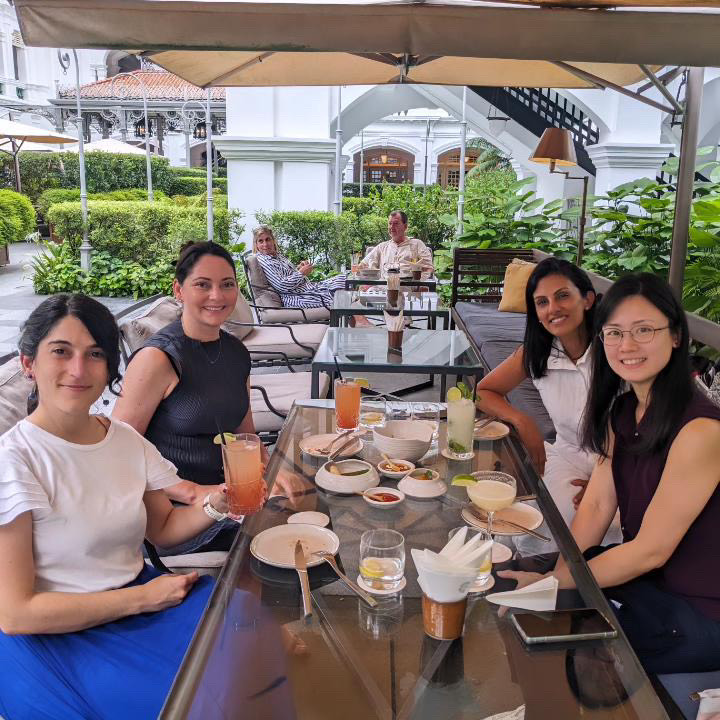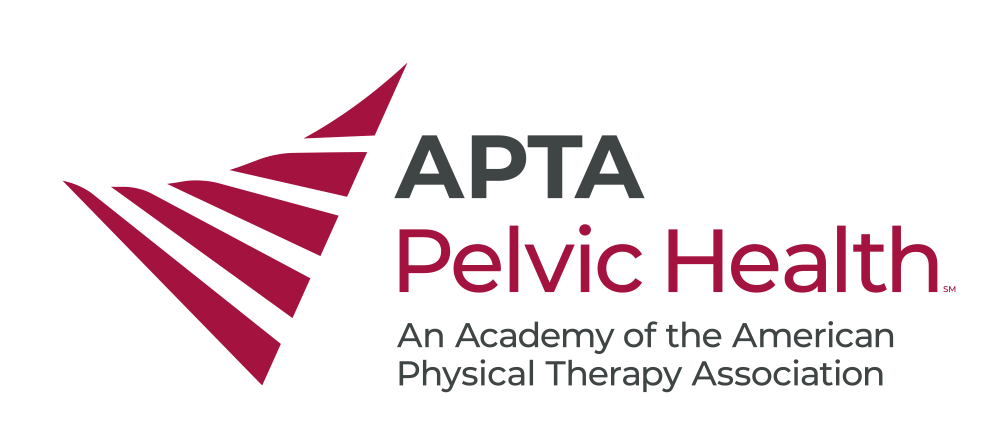Cross-Disciplinary Activities in the Academy of Pelvic Health Physical Therapy
New opportunities offered by the Academy of Pelvic Health Physical Therapy in 2024
2024 presented an important and new opportunity offered by the Academy of Pelvic Health Physical Therapy (APHPT) that benefits us all; APHPT introduced the Cross-Disciplinary Ambassador Scholarship, “launched to offer financial assistance to Academy members who have been accepted to present at interdisciplinary or cross-disciplinary conferences in 2024. The objective is to enhance awareness and visibility of the science and benefits related to pelvic and abdominal health physical therapy, with the overarching aim of elevating the value of this specialty and stimulating cross-disciplinary collaboration between pelvic health physical therapy and other healthcare disciplines.” (https://www.aptapelvichealth.org/events/cdap-2024)
What is cross-disciplinary?
“Cross-disciplinary” is a relatively new term1 used to cover three types of disciplinary collaborations that exist on a continuum: multi-disciplinary, inter-disciplinary and trans-disciplinary.2 Thus, cross-disciplinary activities draw on theories and concepts from two or more disciplines.2 Further insight is offered in Figure 1 and references included are specific to cross-disciplinary collaborations in healthcare and healthcare research.2

Figure 1. Schematic of teamwork in health disciplines, partial definitions and goals based on Choi et al.1
Insights from a cross-disciplinary activity in 2024
I am honoured to be the recipient of one of the 2024 Cross-Disciplinary Scholarship awards for my participation as a presenter in two events at the 49th Annual Meeting of the International Urogynecology Association (IUGA), an inter-disciplinary conference, held in Singapore in June 2024. As this conference and these events involved multiple disciplines with shared goals, they indeed represent a cross-disciplinary activity. Not only were the presenter teams cross-disciplinary, but the pelvic health research was presented to cross-disciplinary audiences.
The first event was a workshop titled “Pelvic floor muscle dysfunction in the patient with pelvic pain and no neurological disease: evidence-based management,” and included a presenter team of expert researchers in several disciplines (physiotherapy, exercise physiology, neurophysiology and neurology), from around the world, chaired by Helena Frawley, PhD (Australia) and co-chaired by Kari Bo, PhD (Norway). Dr. David Vodusek, PhD (Poland) and I rounded out the team as faculty. Not only was this a cross-disciplinary faculty, but the research authored by each faculty member had author teams that were cross-disciplinary. The event started with Dr. Helena Frawley introducing the topic of pelvic pain and pelvic floor muscle dysfunction. As the lead author of the recent consensus document, A standard for terminology in chronic pelvic pain syndromes: A report from the chronic pelvic pain working group of the international continence society3, Dr. Frawley also informed the audience of current terminology standards. This led into a discovery session about greater tone of the pelvic floor muscles in women with pelvic pain and no neurologic disorder. I led a presentation discussing the evidence that greater tone occurs and how it is measured, based on two large systematic reviews.4,5 Dr. Vodusek discussed the bio-plausibility of greater tone and the neurophysiologic mechanism.6 Equally intriguing, was his discussion of how the emotional motor system controls the pelvic organs.7 Next, I discussed evidence for the treatments of the passive property of muscle tone and Dr. Bo discussed evidence for the treatment of the active property of muscle. There were some notable and practical takeaways from this series of presentations starting with terminology; “hypertonic,” a term frequently used to describe greater tone of the pelvic floor muscles, should only be used in the context of neurologic disorder.3 Convincing measurement for the presence of pelvic floor muscle tone requires the use of valid measures and the most convincing measures are taken at rest and derived from the tools EMG, which measures the active property of tone, dynamometry and manometry, which measure a composite of the active and passive properties of muscle tone.4,5 Importantly, based on this work, we now understand that, currently, there is not have enough longitudinal evidence to understand the cause of greater pelvic floor muscle tone. In other words, the notion that tone causes pain or that pain causes tone is not supported by evidence at this time (APHPT greater tone). Nor do we have convincing studies of interventions for greater tone, either using muscle contraction (as in contract-relax) or other forms of “down-training.” The concept of “down-training” was further explored and presented in a collaborative effort by me and Dr. Bo; the literature makes it clear that the term is unclear. One problem is that clinical interventions that aim to “down-train” the pelvic floor muscles have rapidly developed, without much consideration of the measures that support their use. Further work is required to understand this common term that has permeated clinical practice.
The second event was the allied health professional session where I presented, “Evidence Between Pelvic Floor Muscle Tone and Pelvic Floor Muscle Dysfunction.” This session was again cross-disciplinary, included allied health professionals, from around the globe, presenting research to support urogynecologic health. Notably, a physical therapist local to Singapore, Cammy Tsai, presented “An Overview of AHP in Singapore,” providing detail of some of the forward-thinking ideas in Singapore to train, retain, promote and support allied health professionals. This presentation highlights the importance of international cross-disciplinary conferences -- learning and applying ideas from around the globe that elevate patient care and practice. In future conferences of any type, I look forward to hearing more presentations from local communities that showcase how local problems are scientifically being addressed. Whether specific to a local population or ideas to assist in global health systems science, they promote consideration of population needs.
Observations and learnings from a cross-disciplinary activity in 2024
Cross-disciplinary world conferences in pelvic health feature some of the highest quality scientific presentations from around the globe. This is a model to strive toward in 2025. Achieving the goal of the Cross-Disciplinary Scholarship, they have the potential to highlight the research efforts of pelvic health physical therapists and collaborate with related disciplines. Further, they bring great minds together for collaboration, continually pushing the science to new levels.
On a personal note, being seated amongst and presenting with some of the brightest and most interested minds in the world is always inspiring to me. In addition to listening to presentations, time is always well-spent enjoying conversations and learning between presentation sessions. I am grateful to have met many colleagues and connected with researchers from around the globe and to have learned from each of them (some pictured below). Noticeably, there were very few APHPT members in attendance or presenting at IUGA 2024. Cost of travel, location and other factors indeed inhibit attendance. For this reason, I thank the APHPT for having the forward-thinking vision to support the Cross-Disciplinary Scholarship and its activities, thus promoting work of members of the APHPT. I have no doubt that this scholarship will continue to elevate the mission of the APHPT.

Left to right: Helena Frawley (Australia), Rachel Worman (California), Mimi Marcellou (Greece), Kari Bo (Norway), Konstantina Sideri (Greece)

Left to right: Pilar Martin (Australia/Spain), Rachel Worman (California), Preet Singh (Singapore/Australia; Singapore Physiotherapy Association Pelvic Health SIG Treasurer), Yip Wan Hui (Singapore; Singapore Physiotherapy Association Pelvic Health SIG Chairperson)
References
Choi BCK, Pak AWP. Multidisciplinarity, interdisciplinarity and transdisciplinarity in health research, services, education and policy: 1. Definitions, objectives, and evidence of effectiveness. Clinical and Investigative Medicine. 2006;29(6).
Ding Y, Pulford J, Bates I. Practical actions for fostering cross-disciplinary global health research: Lessons from a narrative literature review. BMJ Glob Health. 2020;5(4):13-20.
Frawley H, Shelly B, Morin M, et al. An International Continence Society (ICS) report on the terminology for pelvic floor muscle assessment. Neurourol Urodyn. Published online 2021:1-44.
Worman RS, Stafford RE, Cowley D, Prudencio CB, Hodges PW. Evidence for increased tone or overactivity of pelvic floor muscles in pelvic health conditions: A systematic review. Am J Obstet Gynecol. 2023;228(6):657-674.e91.
Worman R, Stafford RE, Cowley D, Hodges PW. Methods used to investigate tone of pelvic floor muscles in pelvic health conditions: A systematic review. Continence. 2023;6:100593.
Enck P, Vodušek DB. Electromyography of pelvic floor muscles. Journal of Electromyography and Kinesiology. 2006;16(6):568-577.
Holstege G. How the Emotional Motor System Controls the Pelvic Organs. Sex Med Rev. 2016;4(4):303-328.
Author: Rachel Worman, PT, DPT, PhD
Presenter at the 49th Annual Meeting of the International Urogynecology Association (IUGA)


